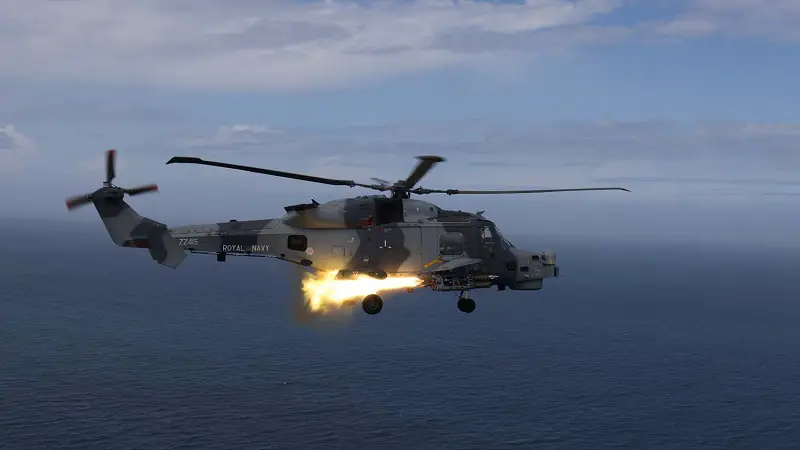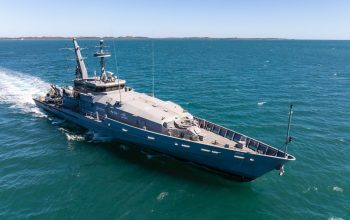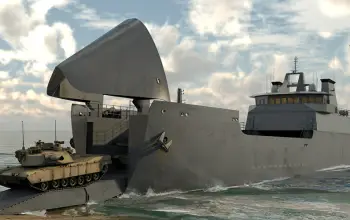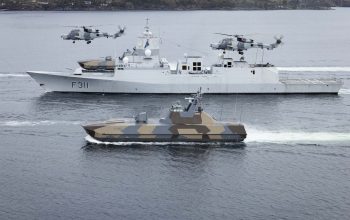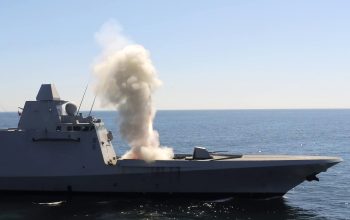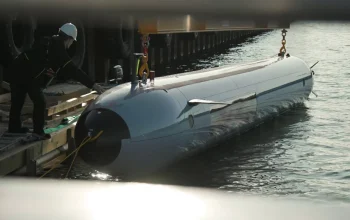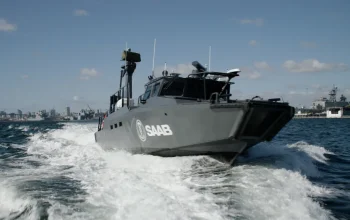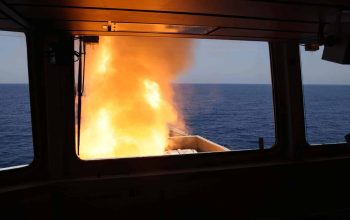A Royal Navy missile which can eliminate small, fast-moving threats was pushed to its limits in a series of firings in skies above the UK. The Operational Advantage Centre (Maritime Warfare), the Royal Navy’s lead organisation on tactical development, has staged an extensive Martlet missile firing trial in Wales, using a Wildcat Maritime Attack Helicopter from Yeovilton-based 815 Naval Air Squadron to test the weapon to its maximum ability. Improving lethality and operational advantage in support of front-line operations is at the core of what the centre stands for, and the trial – dubbed Triton’s Arrow – has proven key to 815 NAS better defining the capability of the Martlet missile. In a first for the squadron, it also involved a successful firing against an aerial target. So far, a Wildcat has fired the Martlet successfully on front-line operations (including hitting an inflatable target while embarked on Portsmouth-based HMS Defender in 2021 as part of the UK’s Carrier Strike Group deployment) and now against moving targets on the water and against a Banshee drone – the first air-to-air Martlet firing by a UK helicopter.
Commander Stuart Crombie, Commanding Officer of 815 NAS, said: “The Martlet firings conducted by an 815 NAS Wildcat during the Triton’s Arrow trial have proven the devastating air-to-air lethality that the Wildcat offers. This capability places us in a unique position amongst the UK’s – and the world’s – military helicopters. Maritime Strike – on, under and now above the waves – is at our core, and 815 stands ready to defend our carriers and their strike groups day and night.”
Lieutenant Michael Vivian, pilot for one of the firing sorties, said: “It was an incredible experience to be involved in the planning and execution of what is now a new capability for the Maritime Wildcat Force and for Defence. The ability to protect a warship such as HMS Queen Elizabeth from fast-moving surface and now air targets make the Wildcat HMA a world-leading capability.”
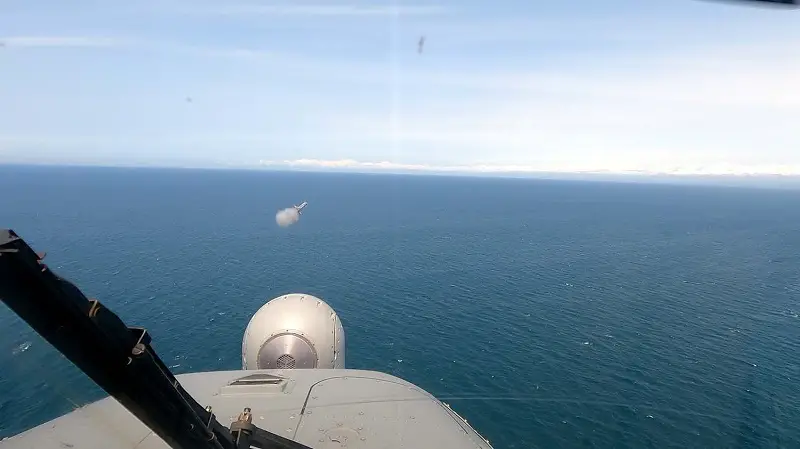
The Martlet has been used on front-line operations over the past few years but the latest testing, supported by 744 NAS and 825 NAS, was to see how the missile system could be used further in a variety of circumstances to combat a range of threats and how it can continue to protect and support the Royal Navy’s fleet. The trials, conducted over two weeks, involved a range of challenging tests for 815 NAS and industry partners Thales and QinetiQ. It saw the Martlet put through its paces and prove its ability to neutralise the equivalent of small, fast-moving craft from speed boats and jet skis at range and airborne threats such as drones. Up to 20 missiles can be loaded onto a Wildcat HMA Mk2 helicopter, adding to the protective ring of steel formed around the UK’s Queen Elizabeth-class carriers. In 0.3 seconds, the missile detaches from the helicopter, accelerating to one and a half times the speed of sound towards its target.
The AgustaWestland AW159 Wildcat (previously called the Future Lynx and Lynx Wildcat) is a British military helicopter. It is an improved version of the Westland Super Lynx designed to serve in the battlefield utility, search and rescue and anti-surface warfare roles. In British service, common variants are being operated by both the Royal Navy and British Army, having replaced their Lynx Mk.7/8/9 predecessors. The Wildcat Maritime Attack Helicopter can carry Sting Ray torpedoes, a door-mounted 0.5″ heavy machine gun, and new light and heavy variants of up to 20× Thales Martlet (Lightweight Multirole Missile, formerly Future Anti-Surface Guided Weapon). Martlet is a lightweight air-to-surface, surface-to-air, and surface-to-surface missile developed by Thales Air Defence for the United Kingdom.


